The wind, love and other disappointments
Stephen Felton
Stephen Felton
2015 February 17
Seriously flippant, radically relaxed, awkwardly
15 CHF (13 EUR)
+ shipping SWISS 2 Europe 3 World 5 CHF
ADD TO CART
+ shipping SWISS 2 Europe 3 World 5 CHF
ADD TO CART

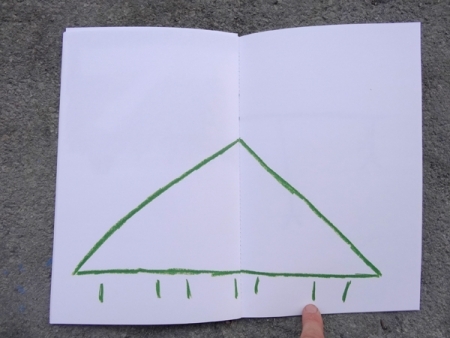
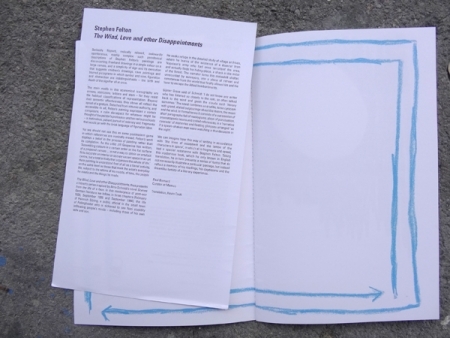
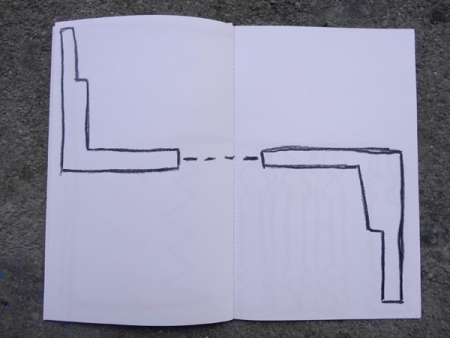
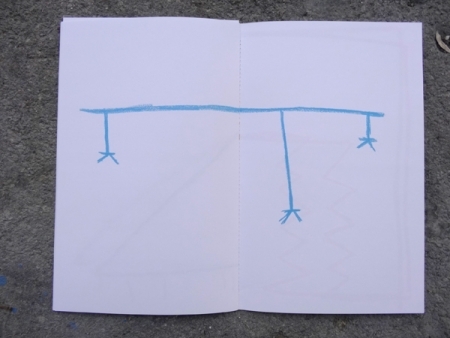
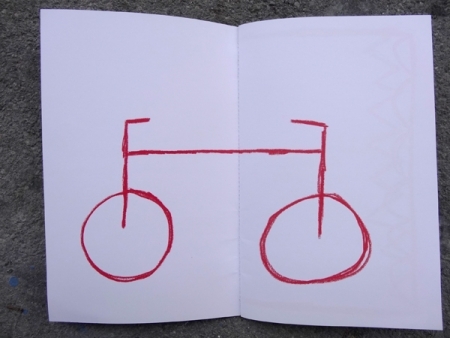
spontaneous, readily complex: such paradoxical
descriptions of Stephen Felton’s paintings are
disconcerting. Freehand drawings in a single colour on a
large canvas, and a simplicity of sign and its execution
that suggests children’s drawings, cave paintings and
blurred pictograms in which symbol and icon, figuration
and abstraction are indistinguishable – the birth and
death of the signifier all at once.
The main motifs in this economical iconography are
arrows, staircases, ladders and stars – for they resist
the habitual classifications of representation. Beyond
their semantic effectiveness, they above all reflect the
speed of a gesture. Detached from virtuoso authority, and
accessible to all, Felton’s painting expresses a certain
composure, a calm disrespect for whatever might be
thought of the painter’s profession and his various schools
– a meticulous, patient pursuit of sobriety and fragments
that would jar with the brisk language of figuration libre.
Yet we should not see this as some postmodern game
in which references are ironically erased. Felton’s work
displays a belief in the process of painting rather than
its completion. As the critic Jill Gasparina has written,
‘Assembling colours in a certain order on the flat surface
of a prepared canvas ... is not a way to obtain an artefact
fit to decorate an interior or occupy vacant space in an art
centre, but a total activity that organises the whole of life.’
Here painting is understood first of all as a banal activity,
on the same level as those that mark the artist’s everyday
life, subject to the whims of his moods, of time, the people
he meets and the things he reads.
The Wind, Love and other Disappointments, thus presents
a hitherto series inspired by Arno Schmidt’s novel Scenes
from the life of a faun. In this masterpiece of post-war
German literature we follow, in three chapters (February
1939, September 1939 and September 1944), the life
of Heinrich Düring, a public official in the small town
of Fallingbostel who is sickened to see Nazi stupidity
infiltrating people’s minds – including those of his own
wife and son.
He seeks refuge in the detailed study of village archives,
where he learns of the existence of a deserter from
Napoleon’s army who had once terrorised the area,
and actually finds his hiding-place, a shack in the midst
of the forest. The narrator turns this makeshift shelter,
unrecorded by surveyors, into a place of retreat and
remoteness from the world that finally allows him and his
lover to escape the Allied bombardments.
Günter Grass said of Schmidt ‘I do not know any writer
who has listened so closely to the rain, so often talked
back to the wind and given the clouds such literary
surnames.’ The novel combines an erudite, terse cynicism
with grand, elated outpourings about the moors, the moon
and the wind. In formal terms it consists of a succession of
short paragraphs full of neologisms, plays of punctuation,
onomatopoeic nouns and coded references, in a ‘narrative
cascade’ of memories and fleeting glimpses arranged ‘as
if a spasm-shaken man were watching a thunderstorm in
the night’.
We can imagine how this way of writing in accordance
with ‘the lines of movement and the tempo of the
characters in space’, in which all is fragments and speed,
had a special resonance with Stephen Felton. Taking
this mysterious book, which he only knows in English
translation, he in turn presents a series of forms that do
not necessarily illustrate a particular passage, but instead
reflect a memory of his readings, his daydreams and the
dreamlike fertility of a literary experience.
Paul Bernard
Curator at Mamco
Translation, Kevin Cook
descriptions of Stephen Felton’s paintings are
disconcerting. Freehand drawings in a single colour on a
large canvas, and a simplicity of sign and its execution
that suggests children’s drawings, cave paintings and
blurred pictograms in which symbol and icon, figuration
and abstraction are indistinguishable – the birth and
death of the signifier all at once.
The main motifs in this economical iconography are
arrows, staircases, ladders and stars – for they resist
the habitual classifications of representation. Beyond
their semantic effectiveness, they above all reflect the
speed of a gesture. Detached from virtuoso authority, and
accessible to all, Felton’s painting expresses a certain
composure, a calm disrespect for whatever might be
thought of the painter’s profession and his various schools
– a meticulous, patient pursuit of sobriety and fragments
that would jar with the brisk language of figuration libre.
Yet we should not see this as some postmodern game
in which references are ironically erased. Felton’s work
displays a belief in the process of painting rather than
its completion. As the critic Jill Gasparina has written,
‘Assembling colours in a certain order on the flat surface
of a prepared canvas ... is not a way to obtain an artefact
fit to decorate an interior or occupy vacant space in an art
centre, but a total activity that organises the whole of life.’
Here painting is understood first of all as a banal activity,
on the same level as those that mark the artist’s everyday
life, subject to the whims of his moods, of time, the people
he meets and the things he reads.
The Wind, Love and other Disappointments, thus presents
a hitherto series inspired by Arno Schmidt’s novel Scenes
from the life of a faun. In this masterpiece of post-war
German literature we follow, in three chapters (February
1939, September 1939 and September 1944), the life
of Heinrich Düring, a public official in the small town
of Fallingbostel who is sickened to see Nazi stupidity
infiltrating people’s minds – including those of his own
wife and son.
He seeks refuge in the detailed study of village archives,
where he learns of the existence of a deserter from
Napoleon’s army who had once terrorised the area,
and actually finds his hiding-place, a shack in the midst
of the forest. The narrator turns this makeshift shelter,
unrecorded by surveyors, into a place of retreat and
remoteness from the world that finally allows him and his
lover to escape the Allied bombardments.
Günter Grass said of Schmidt ‘I do not know any writer
who has listened so closely to the rain, so often talked
back to the wind and given the clouds such literary
surnames.’ The novel combines an erudite, terse cynicism
with grand, elated outpourings about the moors, the moon
and the wind. In formal terms it consists of a succession of
short paragraphs full of neologisms, plays of punctuation,
onomatopoeic nouns and coded references, in a ‘narrative
cascade’ of memories and fleeting glimpses arranged ‘as
if a spasm-shaken man were watching a thunderstorm in
the night’.
We can imagine how this way of writing in accordance
with ‘the lines of movement and the tempo of the
characters in space’, in which all is fragments and speed,
had a special resonance with Stephen Felton. Taking
this mysterious book, which he only knows in English
translation, he in turn presents a series of forms that do
not necessarily illustrate a particular passage, but instead
reflect a memory of his readings, his daydreams and the
dreamlike fertility of a literary experience.
Paul Bernard
Curator at Mamco
Translation, Kevin Cook